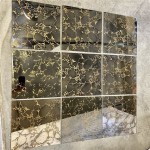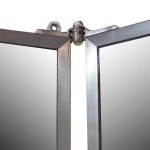Can You Screen Mirror to Roku TV Without Wi-Fi?
Screen mirroring, the ability to wirelessly display the content of a smartphone, tablet, or computer screen on a larger display like a television, has become a ubiquitous feature in modern homes. Roku TVs, known for their streaming capabilities, also support screen mirroring. However, a common query arises regarding the necessity of Wi-Fi for this function. This article explores the possibilities and limitations of screen mirroring to a Roku TV without Wi-Fi.
Understanding the Role of Wi-Fi in Screen Mirroring
Standard screen mirroring protocols, such as Miracast, typically rely on a Wi-Fi network to establish a connection between the source device and the receiving display. The Wi-Fi network acts as a common platform for both devices to communicate, facilitating the transmission of audio and video data. Roku TVs, by default, utilize Wi-Fi for screen mirroring functionalities.
The reason for this reliance on Wi-Fi lies in the bandwidth requirements of screen mirroring. High-quality video and audio streaming necessitate a robust and stable connection. Wi-Fi, especially in its modern iterations (802.11ac and Wi-Fi 6), provides the necessary bandwidth for a smooth and lag-free mirroring experience. Other wireless technologies, such as Bluetooth, typically lack the necessary bandwidth to handle the data throughput required for screen mirroring.
Alternative Methods for Screen Mirroring Without a Router
While a router-based Wi-Fi network is the standard method, certain workarounds can facilitate screen mirroring without a traditional internet connection. These methods involve creating a direct wireless connection between the source device and the Roku TV.
Utilizing Roku's Screen Mirroring Feature Without Internet
Some Roku devices offer a feature that enables them to act as a wireless access point themselves. This allows a source device, like a smartphone, to connect directly to the Roku TV's generated Wi-Fi network. This method bypasses the need for a traditional router but still utilizes Wi-Fi technology. It is important to consult the specific Roku TV model’s documentation to determine compatibility with this feature.
To achieve this direct connection, users typically navigate to the Network settings on their Roku TV and enable the "Screen Mirroring Hotspot" option. The source device can then connect to the Roku TV's Wi-Fi network, just as it would connect to any other wireless network. Once connected, initiating the screen mirroring process on the source device should establish the connection and display the content on the Roku TV.
Wired Connections: An Alternative to Wireless Mirroring
While not strictly screen mirroring, using physical cables offers a reliable alternative for displaying content on a Roku TV without Wi-Fi. Roku TVs typically feature HDMI ports, allowing users to connect devices directly via an HDMI cable. This method provides a stable, high-bandwidth connection that avoids the potential instability of wireless methods. However, it sacrifices the convenience and cable-free nature of screen mirroring.
Using an HDMI cable is particularly suitable for devices with HDMI output, such as laptops, gaming consoles, and some smartphones. It eliminates the need for any wireless configuration and provides a plug-and-play solution for displaying content on the Roku TV.
Exploring Third-Party Apps and Devices
The market offers various third-party apps and devices designed to facilitate screen mirroring without reliance on a traditional Wi-Fi network. These solutions often employ proprietary technologies or leverage existing protocols in unconventional ways. However, compatibility and performance can vary, and users should thoroughly research and test these options before relying on them as a primary screen mirroring solution.
Some of these apps create a direct Wi-Fi connection between the devices, similar to the Roku hotspot feature. Others might utilize alternative wireless protocols or even rely on wired connections via USB. It's crucial to ensure compatibility with both the source device and the specific Roku TV model when considering these third-party solutions.
Considering the Limitations
While the methods discussed above offer alternatives to traditional Wi-Fi-based screen mirroring, they often come with limitations. Direct Wi-Fi connections between devices might have limited range and stability compared to a robust router-based network. Wired connections, while reliable, restrict mobility. Third-party solutions might introduce compatibility issues or require additional hardware purchases. Understanding these limitations is crucial for selecting the most appropriate method for individual needs.

How To Mirror Iphone Roku Without Wifi 5 Steps With Pictures

How To Mirror Iphone Roku Without Wifi 5 Steps With Pictures

Can You Screen Mirror Without Wi Fi 2024 Answered

How To Mirror Iphone Roku Without Wifi 5 Steps With Pictures

How To Use Roku Without Wifi

How To Mirror Iphone Roku Without Wifi 5 Steps With Pictures

3 Easy Methods How To Mirror Iphone Rokutv Airdroid

How To Screen Mirror From Your Phone Tablet Or Computer Roku Streaming Device
What Is The Easiest Way To Screen Mirror An Iphone Roku Without Wifi Quora

Can You Screen Mirror Without Wi Fi 2024 Answered








